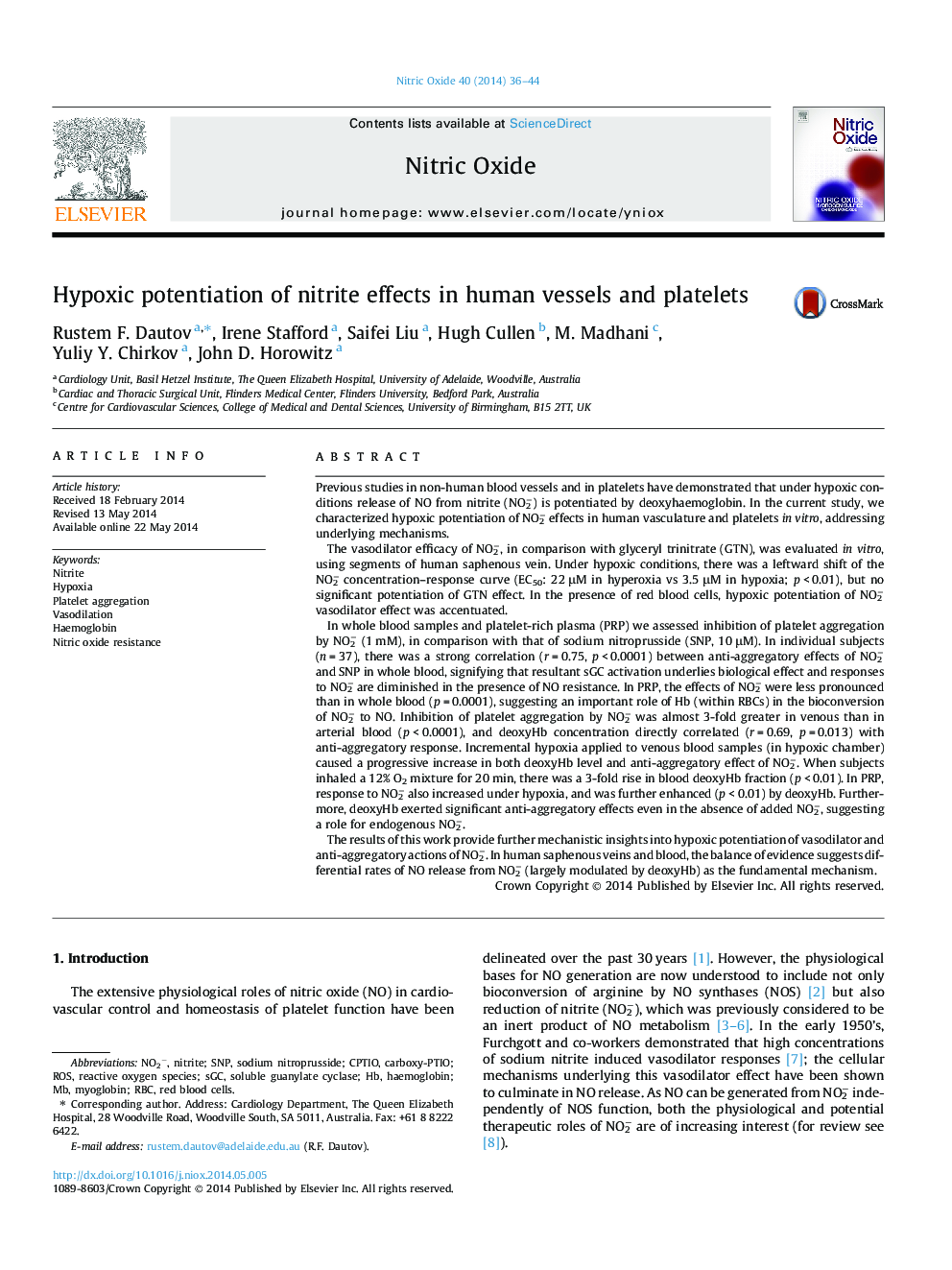| کد مقاله | کد نشریه | سال انتشار | مقاله انگلیسی | نسخه تمام متن |
|---|---|---|---|---|
| 2000657 | 1541619 | 2014 | 9 صفحه PDF | دانلود رایگان |
• Hypoxic potentiation of NO2− vasodilator effect is confirmed in human saphenous vein.
• Addition of erythrocytes, haemoglobin or myoglobin increases the hypoxic potentiation.
• In human blood samples hypoxia potentiates inhibition of platelet aggregation by NO2−.
• Anti-aggregatory effect of NO2− is diminished in the presence of platelet NO resistance.
• Blood deoxyhaemoglobin level directly correlates with platelet response to NO2−.
Previous studies in non-human blood vessels and in platelets have demonstrated that under hypoxic conditions release of NO from nitrite (NO2−) is potentiated by deoxyhaemoglobin. In the current study, we characterized hypoxic potentiation of NO2− effects in human vasculature and platelets in vitro, addressing underlying mechanisms.The vasodilator efficacy of NO2−, in comparison with glyceryl trinitrate (GTN), was evaluated in vitro, using segments of human saphenous vein. Under hypoxic conditions, there was a leftward shift of the NO2− concentration–response curve (EC50: 22 μM in hyperoxia vs 3.5 μM in hypoxia; p < 0.01), but no significant potentiation of GTN effect. In the presence of red blood cells, hypoxic potentiation of NO2− vasodilator effect was accentuated.In whole blood samples and platelet-rich plasma (PRP) we assessed inhibition of platelet aggregation by NO2− (1 mM), in comparison with that of sodium nitroprusside (SNP, 10 μM). In individual subjects (n = 37), there was a strong correlation (r = 0.75, p < 0.0001) between anti-aggregatory effects of NO2− and SNP in whole blood, signifying that resultant sGC activation underlies biological effect and responses to NO2− are diminished in the presence of NO resistance. In PRP, the effects of NO2− were less pronounced than in whole blood (p = 0.0001), suggesting an important role of Hb (within RBCs) in the bioconversion of NO2− to NO. Inhibition of platelet aggregation by NO2− was almost 3-fold greater in venous than in arterial blood (p < 0.0001), and deoxyHb concentration directly correlated (r = 0.69, p = 0.013) with anti-aggregatory response. Incremental hypoxia applied to venous blood samples (in hypoxic chamber) caused a progressive increase in both deoxyHb level and anti-aggregatory effect of NO2−. When subjects inhaled a 12% O2 mixture for 20 min, there was a 3-fold rise in blood deoxyHb fraction (p < 0.01). In PRP, response to NO2− also increased under hypoxia, and was further enhanced (p < 0.01) by deoxyHb. Furthermore, deoxyHb exerted significant anti-aggregatory effects even in the absence of added NO2−, suggesting a role for endogenous NO2−.The results of this work provide further mechanistic insights into hypoxic potentiation of vasodilator and anti-aggregatory actions of NO2−. In human saphenous veins and blood, the balance of evidence suggests differential rates of NO release from NO2− (largely modulated by deoxyHb) as the fundamental mechanism.
Journal: Nitric Oxide - Volume 40, 31 August 2014, Pages 36–44
